The male lion was considered a solar symbol by ancient cultures. Known as the “King of the Jungle” its shaggy mane resembles the diagrammatic rays of the sun.
In esoteric symbolism, kings and the sun have the same meaning; authority and the provider of life.
The sun provides vitality and nourishment for the earth which is symbolic of body and mind — sun being the mind, earth being the body. Kings have sovereignty over their kingdom which is symbolic of the mind.
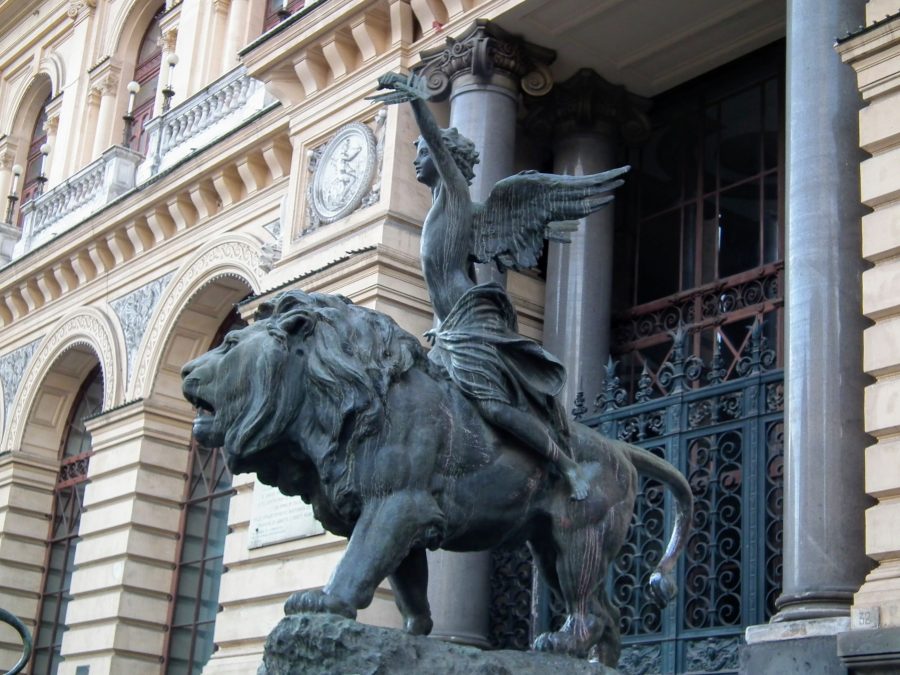
In addition, male lions protect the pride. They have authority over their female counterparts. Lionesses in esoteric symbolism are recognised as a lunar symbol.
The reason for this perhaps is because lions do most of their hunting at night and it is the role of the female to enact the kill and provide for the provide.
Lunar symbols, and the darkness of night, relate to emotions and the subconscious mind. Knowing this, it is possible to deduce that the symbolic meaning of male lions relates to individuals that have control over their subconscious mind which then provides them with nourishment.
“Your subconscious mind behaves to the nature of your thoughts. You think with your conscious mind, and whatever you habitually think sinks down into your subconscious mind, which then creates according to the nature of your thoughts. Your subconscious mind is the seat of your emotions. It is the creative mind.” ~ Dr. Joseph Murphy, The Power of the Subconscious Mind
In nature, lions are courageous beasts that will fight to the death to protect their pride. Although these creatures are considered ferocious, they are also playful and prefer to live a simple and peaceful life.
In the image below, you can see a lioness carved into a stone water fountain. Water is also a symbol of emotions. The lioness is laid down, suggesting she is in a relaxed and subdued state. The god-like figure in the background is pointing towards the statue as if to say, subdue your emotions and your mind will also be relaxed.
Essentially, this is the lesson for you to learn from the symbolic meaning of the lion.
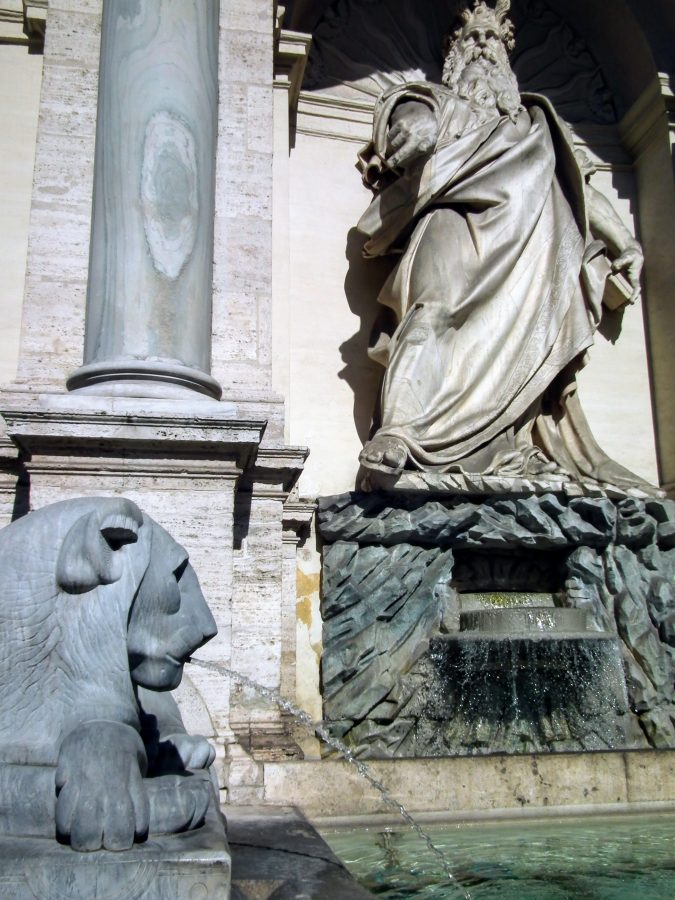
The lion’s connection with the sun has a deeper symbolic meaning. The mane may have a slight resemblance to the sun, but the actual connection is in relation to strength and power.
In Chinese traditions, the sun was recognised as the Great Male Principle. As the source of life, the sun is associated with en-light-enment and illumination.
To the alchemists, Sol Invictus – the Unconquered Sun – is a symbol for individuals that have the strength of mind to overcome challenges. Sol was hailed as “the rising sun who dispels the forces of evil.”
It is often the case that we are not aware of the innate powers within us and at times we lack assertiveness and courage when in pursuit of goals. This is because of unnatural fears ingrained in the subconscious.
An extension of the sun is fire. Ancient sages assigned the four elements with meaning. Fire was given to passion and personal power. Imagining fire in the mind’s eye can also be used to dissolve old values that create problems in your life and replace them with higher values which will improve your quality of life.
Whenever you face personal struggles, the lion is a reminder to summon strength in order to achieve your goals.
When you see the synchronicity of lions or solar symbols, this is the message your unconscious is trying to tell you.
Courage and willpower are one of the first things you need in pursuit of success. This is why you find lion statues positioned in temple doorways.
You will often find lions at the entrance of palaces. This reflects the King’s power and courage.
“In medieval symbolism, the “philosopher’s stone” (a pre-eminent symbol of man’s wholeness) is re- presented as a pair of lions or as a human couple riding on lions. Symbolically, this points to the fact that often the urge toward individuation appears in a veiled form, hidden in the overwhelming passion one may feel for another person. (In fact, passion that goes beyond the natural measure of love ultimately aims at the mystery of becoming whole, and this is why one feels, when one has fallen passionately in love, that becoming one with the other person is the only worthwhile goal of one’s life.)” ~ Carl Jung, Symbols of Transformation
The kings of Europe and Assyria were keen to remind their subjects of their lion-like courage and often used the beast on their coat of arms. The Assyrian king, Adad Nirari II declared “I am all-powerful…I am lion-brave.”
Lions have been featured in esoteric symbolism for thousands of years. The Sumerians were the first to assign the animal to the astrological house of Leo.
In astrology, the house of Leo is said to represent a balance between emotion and intellect.
This beautiful mosaic of the ‘Passing Lion’ recovered from ancient Babylon also reflects the movement of the sun across the sky.

In the Mithraic tradition of Persia, we find bas reliefs portraying a lion in a threatening stance. Persian mythology recounts the story of the sun-god Mithra slaying a bull. In the wild, lions prey on bulls.
Some researchers claim the Persian sun god, Mithra, was the pagan Christ.
In the Bible’s book of Revelation, John describes Jesus as the “lion of Judah,” the only living beings capable of breaking the seven seals of the scroll. Christ also has 12 disciples, each of which represents a sign of the zodiac (around the sun) and traits of personality.
Here again, we see the lion is a symbol of overcoming animal nature. Jesus, and other enlightened men before him, had the light (of this sun) within and were prepared to share knowledge with others.
In Buddhism and Hindu, the lion is typically pictured with a Bodhisattva, a wise man that withholds enlightenment in order to teach others transcendental wisdom and help guide them towards nirvana.
Essentially, the lion in Hinduism has the same meaning as fire, which can burn away the delusions of the habitual mind. We find a similar comparison in both the Old Testament and ancient Sanskrit writing.
Psalms 7:1-2 | “Deliver me from all who chase me! Rescue me Otherwise they will rip me to shreds like a lion; they will tear me to bits and no one will be able to rescue me.”
In Hindu mythology, the Hindu god Narasimha, an avatar of Lord Vishnu, destroys demons by ripping out their hearts.
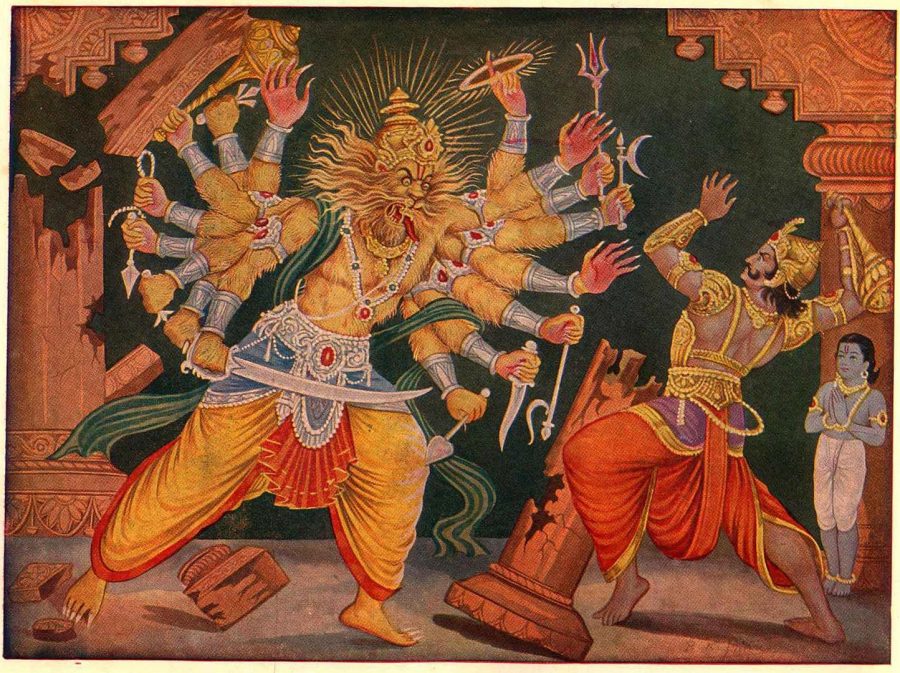
But as with all symbols, there is a negative aspect, thus the lion represents two opposing aspects of man’s nature; ferociousness and affection.
The lion is seen to dominate other animals and is a skilful predator. In The New Testament, Satan is referred to as a lion, ruthless, stealthy and aggressive.
Peter 5:8 | “Be alert and of sober mind. Your enemy, the devil prowls around like a roaring lion looking for someone to devour.”
Whilst hunting, the male lion roars at its prey to scare it off and steer it towards the female lions. When we are not of a sober mind, we become easy prey for people that intend to dominate and manipulate others.
The lion, therefore, is not only symbolic of illumination. Its true meaning is the Self – the mediator between the ego and superego. The Self only becomes whole during the process of individuation.
The sun also represents the Self. Thus the curious wood carving of the green lion devouring the sun is an enigma that appears to have alchemical commentators baffled.
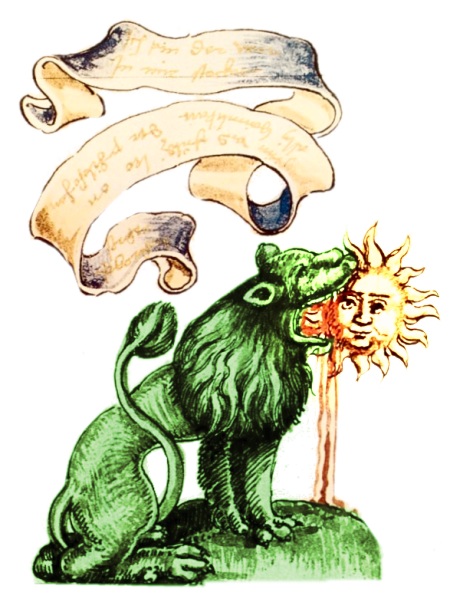
This is my opinion.
Mercury represents the vital energy, which first appears as a thought and later becomes manifest as physical reality. The reason for this is explained clearly in the Numbers Symbolism Course.
In brief, Mercury is also associated with wisdom, thus the green lion represents higher knowledge that emerges in the mind as a superior idea. The initial stirring of Truth may not be entirely developed, but the seed has been planted in which the conscious ego has the potential to transform. Eventually, the True Self develops as a conscious thought.
“The lion is the “lower sun,” a theriomorphic representation of the masculine principle. There are alchemical pictures showing a lion devouring the sun. Since sun, king, and gold are equivalents, this would signify the descent of consciousness into the animal realm where it must endure the fiery energies of instinct. In chemical imagery, it is the purification or refining of gold.” ~ Edward Erdinger, Anatomy of the Psyche
Thus the green lion swallows the existing consciousness of the sun – The Self – to become the authority of the mind.
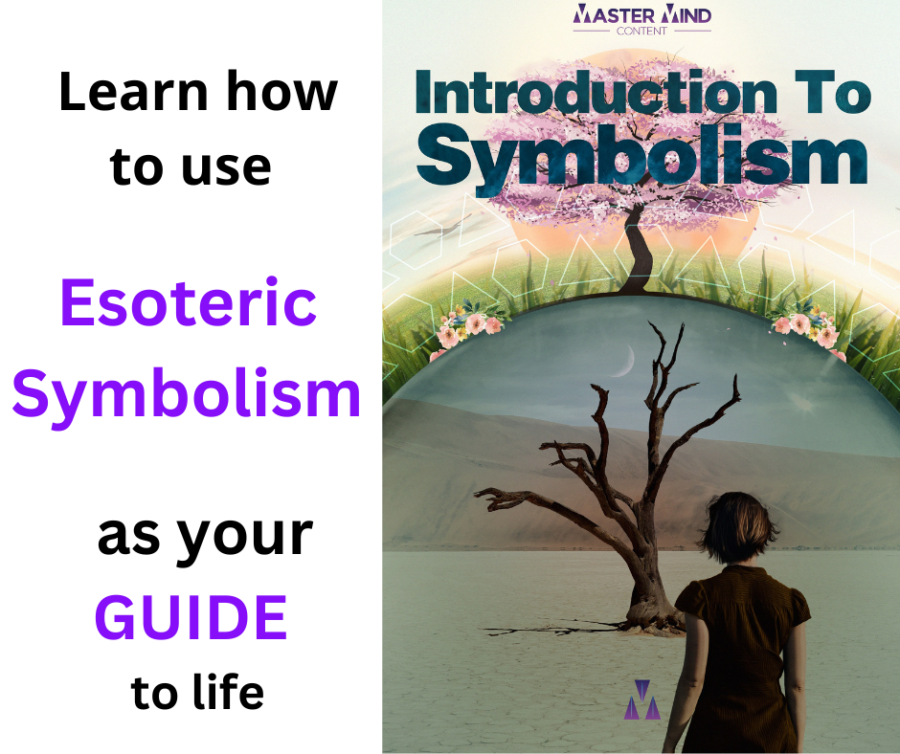
Click here to download your FREE copy of the Introduction to Symbolism Guide
The concept has been interpreted literally by some commentators so that people become transfixed with the idea of reincarnation. Yet this is a short-sighted view. When you can be so easily persuaded along the path of religious dogma, you are already dead to the world!
That’s not to say that reincarnation is not possible. The Laws of Thermodynamics suggest it is a strong possibility. But I am a realist. I honestly cannot say whether reincarnation is true or not. What’s more, the only benefit of having this belief is to life a moral life.
Morality is a good quality to have, of course, but the way religions push morality on people creates limiting beliefs. My duty is to help you snap out of the trap and live a fulfilling life you can enjoy. This article on the seven sins and seven virtues is as good a place to start as any.
It is not for me to knock people for their beliefs, especially when there is clinical evidence to support reincarnation. Just because I haven’t had a past life regression, it does not mean I have not had a past life.
And I am open-minded enough not to dismiss reincarnation. But my eyes are also open to how myths and concepts can be interpreted wisely without stepping in religious dog-muck.
At this point in time – the present moment – it is more important for us to find our true nature in this life, not a past life, or a future life.
This not also a Buddhist philosophy; and it conflicts with the idea of reincarnation in the afterlife.
The six realms of existence in Buddhism relates to the psychological and emotional development of human beings as individuals.
Buddhism is essentially describing the six states of reality you live in from one life cycle to the next; from one day to the next; from one moment to the next.
You will know from experience that from time to time, your beliefs and feelings about the world change. You have probably experienced new things or acquired new information that changed the way you think, act and feel.
You could say then that in each cycle of life, your old values died and were reborn. Does this expression sound familiar? As you consciously become aware of new values, you adopt a broader view of the world.
But it is also true that when you suffer traumatic experiences or acquire new information that does not serve you, your views can become short-sighted and you adopt a narrower view of the world.
Of course, there is no telling how long each life cycle takes or which way the wheel will turn. That depends on your dharma and the resulting karma.
The realms in between are where you are tested and these occur in the minds of men every day. Life really is a challenge!
Discovering your true nature takes time and is complicated. But if you are not aware of how your inner world is influencing your outer reality, life will become impossible. What’s more, you will experience life in the lower realms.
The habitual mind, your little id and ego, are not your friends. These are your demons, and in the six realms of Buddhism, demons live in the lower realms of existence.
Life is about personal development so be prepared to learn. Moral values and self-discipline are how you reincarnate and ascend to higher realms of existence. A lack thereof, and you descend into the lower realms.
So Buddhists (and Hindus) say there are six realms of human existence. In other words, six states of mind we experience on Earth during the course of our lives.
There are three upper realms; heaven, human and asuras, and three lower realms; animals, hungry ghosts and Hell.
Life in each of these realms is not permanent; you shift from one to another at regular intervals, oftentimes from one day to the next. As you know, “life has its ups and downs.”
These shifts are attributed to karmic energy based on your dharma; your actions have a reaction which is karma; our daily experiences are the result of cause and effect.
So positive thoughts and actions – the ‘saintly’ gentile in you – delivers positive karma and you experience life in the upper realms.
On the flip side, delusional thoughts and actions, such as anger, greed and ill-feeling towards others, plummet you into the lower realms. Abusing the seven deadly sins will see you “go to hell” unless balanced with the seven heavenly virtues.
Good deeds and bad deeds. Heavenly bliss or suffer in Hell. How often do you hear expressions of this nature? Clichés are clichés for a reason.
Scholars believe the ancients were obsessed with duality – nothing can exist without a polar opposite.
Whilst this is true, the ancients were acutely aware that every polar opposite also has a centre and that balance is essential – an understanding that is often lost to modern-day minds.
Buddha called this balance “The Middle Path” or “The Middle Way.” You often see this concept brought to life in ancient iconography as gods fighting demons, the dual aspects of your personality.
Essentially, this is the duality of the sinner and the saint – the light and dark side of your character.
The angelic aspect of your character is when you consciously make sacrifices and do the right thing for others and for yourself.
The little devil is when you do things you shouldn’t, even when you know you shouldn’t. The little inner voice that says, “Oh, it will be alright, one more won’t hurt.” Or sometimes, “Ah, sod it!”
For example, think of the times when you knew you shouldn’t have had another biscuit, cigarette, or pint of beer. But you did anyway.
This is caving into the craving. And being lured by temptation, as you well know, is associated with the Devil – and he lives in Hell!
This is what the church say so it must be true…
On the other hand, when you make sacrifices – think Jesus on the cross – you are rewarded with good karmic energy and ascend to Heaven to be with “God.”
Take the religious bullshit out of the crucifixion story and you get what Buddhists call a higher realm of existence which is the karmic result of good dharma.
The concept of reincarnation then relates to your current existence on Earth in THIS life. Death and rebirth is an essential part of life.
In 1 Corinthians 15:31 Paul says | “I die daily.”
What he means by this is he transforms his energy every day. In doing so he eventually has a moment of self-realisation and upgrades his subconscious programs. This is how you succeed at self-development.
In Buddhist and Hindu cosmology, the six realms are symbolised by devas and asuras, or if you like, gods and demons.
In ancient scriptures and myths, the characters are clearly classified as gods and demons. And every character represents an aspect of your personality.
These stories are often retold on temple walls, such as the bas reliefs at Angkor Wat in Siam Reap, Cambodia.
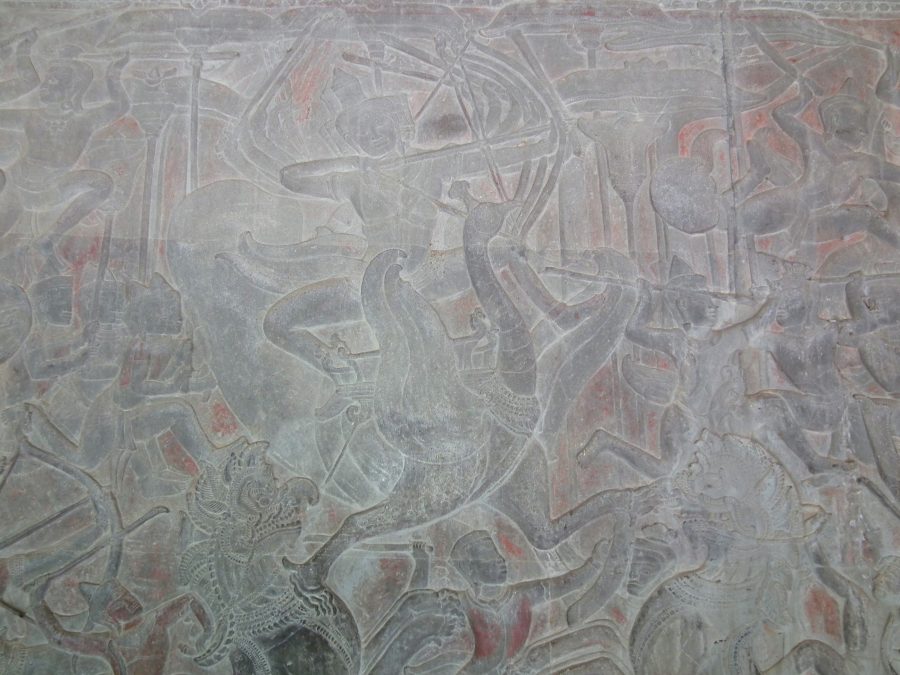
And this is the whole point of esoteric symbolism. The true meaning is disguised.
It’s time to wake up and see the truth for what it really is. I will explain this in greater detail using the six realms of existence as examples.
Paradise. Eden. Nirvana. Perfection. Heaven doesn’t really need any introductions and we have all had a taste, but for most of you, it’s like a mental delicacy you don’t get to sample often enough.
The key question is how do you get to heaven?
However, that is easier said than done and there’s more to it than recognising there is an electromagnetic field or united consciousness! Yes, this is how we are all connected, but experiencing unity and finding inner-peace requires you to collapse duality.
“The knowledge “I Am” is the greatest God, the Guru; be one with that, be intimate with it. That itself will bless you with all the knowledge relevant for you and in the proliferation of that knowledge it will lead you to the state which is eternal.” ~ Nigargadatta Maharaj, Prior to Consciousness
Still, there are many accounts that describe living in perfect balance and harmony once you achieve self-realisation, so it is not impossible.
Most people have to practice intense meditation for years before they reach nirvana. Others are lucky and it comes to them in a flash once they understand dharma.
Upon reaching full enlightenment, you can live in a state of “positive Samadhi” which is life in the heavenly realm all day, every day.
For the record, I have not yet reached absolute enlightenment, but I have had a taste so am consciously aware of its existence.
When meditating it is possible to reach this higher state of consciousness and experience positive Samadhi. But until you achieve absolute Samadhi it is difficult to continuously carry this feeling all day, every day.
But that is the purpose of self-development. Pay special attention to the word “Self” here!
“By donating the Self you get the Brahman and when you donate the Brahman you get Parabrahman. You must have a deep, intense desire for Self-knowledge.” ~ ~ Nigargadatta Maharaj, Prior to Consciousness
You will not find true happiness, or “heaven” by looking outwards towards some religion-created God or idol, it comes from within you. The self!
You have to look at yourself and be honest about your weaknesses and what actions you did that caused things to go wrong.
The eight noble truths help with this. According to the Buddha, right, thoughts, right actions etc will be rewarded with good karma, after which you will enjoy the taste of “heaven” more often.
Being human is your greatest test. It is only in this realm that you have the opportunity to become enlightened. Buddhism, therefore, considers the human realm to be the most auspicious for spiritual progression.
We should, therefore, be grateful for this opportunity and not waste it.
Sure, life can be tough at times. We have to earn a living and grinding out a day for the corporate machine is not always enjoyable. Gautama Buddha demonstrates how to overcome attachments to the material realm in the four noble truths.
Essentially, you have to live life in accordance with the universal laws of nature and the laws of the land. There is no escaping this, it is just something you have to accept. And sometimes life is hard.
But the lesson taught by the Buddha is ‘keep life simple.’ Don’t get lured into the materialistic world of desire. Where there is desire, there is suffering. And when you suffer you are in the lower realms of existence.
“In his first Dharma talk at the Deer Park in Sarnath, the Buddha said, “Look deeply into the nature of suffering to see the causes of suffering and the way out.” ~ Thich Nhat Hanh – Living Buddha Living Christ
Controlling your desires of course is easier said than done, but this is our challenge. And as artist impressions on temple walls show us, we have to do battle with the demons of our personality and discover our true nature.
The realm of the asuras is where the mind is infiltrated by the “demon kings” that inhabit the lower realms. These characters are the demi-gods, giants of men, and Titans of mythology.
In Hindu mythology, the asuras are characterised as part spiritual beings, part demonic beings, indicating the dual nature of man’s personality. The asuras are nagas, yaksas, gandharvas, kinnaras, garudas, and mahoragas.
You will probably know this realm and its characters pretty well – the overwhelming desire when you are being led into temptation. Here you have to summon the strength of the gods to overcome the demons.
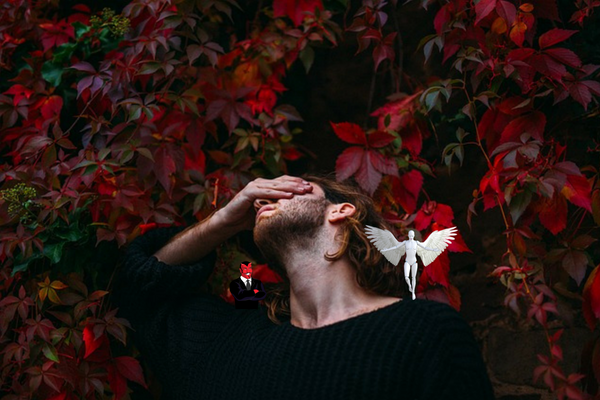
But there are also times when you have to do something against your will for the betterment of somebody else. It can break your heart to tell a child or lover, no, but deep down you are acting in their best interests.
It is in the realm of the asuras where people overcome addiction. But it is the first step to self-realisation. They have at least dragged themselves out of the mire of the lower realms.
So do you see how the realms of existence relate to control of emotions and desires?
A good example of this realm in familiar religious texts is the story of Adam and Eve. When they fall to temptation by eating the forbidden fruit, they are banished from the Garden of Eden – or Heaven.
In the image below you see demigods trying to cure people with medication whilst others are being thrown into the fires of Hell for insubordination.
Make a sacrifice and you ascend to the upper realms where you can enjoy life and even experience bliss.
The first of the three lower realms is the animal realm, a reflection of man’s basic instincts. This is the realm we live in when we cannot control our desires experienced in the asura realm.
Humans are essentially beasts. We have urges and often act on impulse. Sex, food and sleep are instincts of all animals – and the same is true of human beings.
The difference between man and animal, however, is that we have the opportunity to experience enlightenment. But to do that we have to learn how to control our basic instincts.
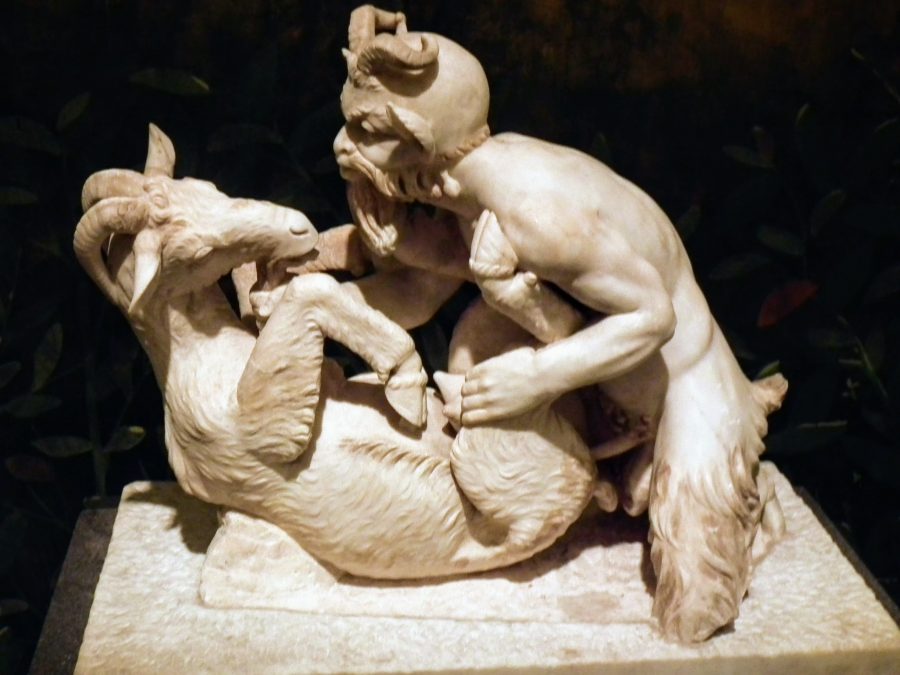
Essentially it is a realm of ignorance whereby we are not aware of higher states of consciousness. Sound familiar?
The realm of the hungry ghosts is where the ego completely takes over and you are unable to resist temptation.
It is the realm typically experienced by addicts. The craving is so strong it takes over your life. Subsequently, your true self becomes a ghost in the recesses of your mind.
When in the realm of the hungry ghost, you are controlled by your habitual mind. Your true-self has been ejected from your body and the auto-pilot switched on.
You are not in control!
It is a dangerous realm to be in because the ego is never satisfied. It is restless and always craving for something new. Our minds need to be occupied and our desires satisfied.
The capitalist society which promotes consumerism and materialism preys on this weakness. We are subsequently controlled by greed, lust and unhealthy competition which ultimately results in anger, jealousy and ill-feelings. Or worse.
Once you become trapped in the realm of hungry ghosts it is difficult to escape – especially when you are not consciously aware of dharma, karma or your true nature.
You will never find permanent satisfaction in this realm and unless you stand up to your demons, you will exist in the lower realms more than the upper realms.
The impression we have of Hell is fire and brimstone. But on a physical level, Hell is the realm we live in when we are dissatisfied with life.
But you create your own reality through thoughts, emotions and actions. It is up to you and you alone to take control of your life and master your emotions. You have to pay attention to your inner-world by observing the experiences in your outer world and being mindful of your thoughts.
“Attention is rewarded by a knowledge of reality. The difficultly is to keep the attention fixed upon the real situation and to prevent it returning surreptitiously to the self with consolations of self-pity, resentment, fantasy and despair.” ~ Katsuki Sekida, Zen Training
Purely from a psychological level, a calm mind is a peaceful mind which in turn means you live in a peaceful environment. Your mood affects everyone around you and people that live in Hell can destroy a peaceful atmosphere in a flash.
So if you want to believe the six realms of existence in Buddhism relate to the afterlife, go ahead. But for your own sanity, and for the sake others around you, don’t forget you reincarnate on a daily basis in this life as well. You may live on Earth but it is still possible to experience the realm of Heaven.
The first time I saw an alligator in real-life, I shivered. It was in Busch Gardens in Tampa Bay, Florida. I was only 14 at the time. Now I understand the symbolic meaning of alligators and crocidiles, I can understand why a shiver of energy went through me.
As a young boy, I had a recurring dream. Close to where I lived was a clearing with unkempt grass and a partly demolished brick wall. In my dream, the clearing was a pond. In my dream, I was being chased by alligators as I frantically swam to reach the other side. In some dreams, it felt as though I was not getting anywhere.
Although I don’t remember the minute details of the dream 30 years plus on, I do remember frantically swimming from these scaly predators. I don’t remember ever escaping from the pond, but I was never devoured either.
If I’d have known about the symbolic meaning of alligators at the time, it would have saved a lot of heartaches for me growing up.

Click here to download your FREE copy of the Introduction to Symbolism Guide
Dreams, of course, reveal significant aspects of your psyche. Patterns that occur in dreams correspond to various aspects of physical and mental health. They indicate when people are anxious or depressed, suffered trauma or face difficulties in life.
I suspect in my case, the dreams emerged out of fear and anxiety. I was a very shy and quiet child. Even from such a young age I never felt as though I fitted in; even at home. Little did I know at the time, these early experiences would create problems in my adult life.
“There are certain events of which we have not consciously taken note; they have remained, so to speak, below the threshold of consciousness. They have happened, but they have been absorbed subliminally, without our conscious knowledge. We can become aware of such happenings only in a moment of intuition or by a process of profound thought that leads to a later realization that they must have happened; and though we may have originally ignored their emotional and vital importance, it later wells up from the unconscious as a sort of afterthought. As a general rule, the unconscious aspect of any event is revealed to us in dreams, where it appears not as a rational thought but as a symbolic image.” ~ Carl Jung, Man and his Symbols
The eminent psychoanalyst, Carl Jung believed the symbolism that surfaces in dreams are how the unconscious mind communicates to us.
Although Jung also thought universal symbols that are common to all mankind have an entirely individual key in dreams, the esoteric wisdom in world mythology seems to be part of the collective unconscious which Jung also believed influences dreams.
During my investigations of esoteric symbolism, I consistently find striking similarities between cultures from all over the world.
And when I say ‘striking similarity’ what I really mean to say is they are exactly the same. Take a look for yourself.
Various members of the Crocodilian family are central to the mythologies of numerous cultures. The crocodile, alligator, gharials and caiman can be found in various mythologies all over the world.
Furthermore, they are a complex symbol which has dual meaning. This causes confusion amongst many scholars and commentators.
The word crocodile in English has Greek origins meaning lizard. Therefore, in esoteric symbolism, when we talk about crocodiles and alligators, we can include various other members of the reptilian family.
The symbolic meaning of alligators and crocodiles also incorporated other reptilians such as lizards and snakes are prominent in world mythologies. Iguanas also make an appearance. Essentially reptiles have the same meaning as crocodiles and alligators – the potential to overcome material reality and discover your higher “spiritual” nature.
Ancient cultures recognised man’s potential to connect with a higher conscious mind. There is an energetic field which we can tap into and retrieve the information we need to guide us through life.
In my opinion, this intelligent force probably has something to do with quantum particles and string theory. Scientists have discovered a single photon permits a two-way conversation.
But that is an article for another day.
Ancient cultures seemed to be aware of this phenomenon thousands of years ago. They understand this knowledge was so critical to the evolution of mankind that they built clues into their temples so it would be preserved for future generations.
In the image below, you can see a lizard built into the central plaza of Machu Picchu – a city hidden in the Peruvian mountains, undiscovered, and thus not destroyed by the Spanish conquistadors.
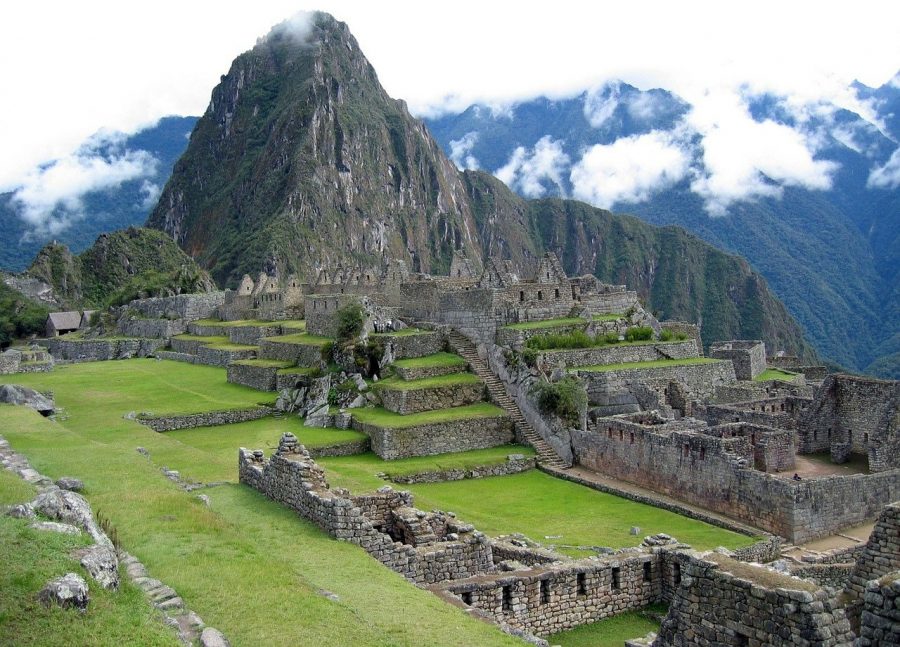
The description is an indication that man had evolved from a being with a primitive reptilian brain to develop the Neocortex and an ability to analyse complex questions and achieve great feats.
Ancient civilisations from the Middle-East, Asia, Egypt and Mesoamerica also recognised this dual aspect of mind kind which they reflected in their mythologies with the archetype of crocodilians.
They presumably made this link because crocodiles live and hunt in both land and water. This ability also reflects man’s capacity to transcend both “worlds” – the physical (land) and the astral (water).
This process does not relate to the mainstream idea of reincarnation as is commonly taught, but the purification of bad habits, attitudes, limiting beliefs, and personality traits that cause problems in our lives.
Water is also related to emotions in symbolism. On a deeper level, this relates to the toxic chemicals that build up in your body and the suppressed emotions that prompt you to have odd feelings and tempt habitual behaviours.
Moreover, emotions “lead you into temptation.” The reptilian part of the brain, which has an obvious link to the symbolic meaning of alligators, primarily governs your survival instincts. Today, the subconscious is mostly concerned with emotional survival.
The process of “reincarnation” involves changing your thought, emotions and actions. By doing so, the subtle energies that create our reality, change the experiences we have in life.
Practising personal development is required to improve how you channel energies.
Energy is responsible for the whole of creation including, your personality, characteristics, gait, how you feel, how you maintain strength, how you nurture inner peace etc. Everything.
Characteristics displayed by reptiles are reflected in the celestial deities of old together with iconic figures like Jesus, Mohammad, Krishna and Buddha Gautama.
Rather than taking these parables literally, it is pertinent to recognise religious characters teach us how to perform the process of transformation 0 birth, death and rebirth.
Whether these enlightened beings existed historically or not is irrelevant. The fact remains that their stories serve critical importance in the evolution of mankind and the sustainability of the planet.
If you neglect to rise above your animal nature, you will remain obsessed with material possessions, worldly attachments and uncontrollable emotions. You will live on the land – in ego consciousness which lusts with desire.
Desire, said the historical Buddha, is the cause of all suffering.
Because of their ability to live on land and water, native American tribes revered alligators as a symbol of power and high status. In many native legends, reptiles are used as mediators between the two worlds.
The “two worlds” are the physical realm and the realm of the superconscious – the mysterious world of quantum particles.
In rational terms, the physical realm relates to the conscious mind and the astral realm is the unconscious mind.
“In the [conscious] mind, what there is, is ignorance. Real wisdom is not in the mind, it is beyond the mind [the unconscious]. The mind is ignorant, and therefore it falls into so many serious errors.” ~ Samael Aun Weor
Alligators and crocodiles were worshipped throughout numerous cultures for this precise reason. Their ability to submerge themselves under the water and remerge on land is analogous to man’s ability to look into your unconscious mind and bring suppressed emotions to the surface – the conscious mind.
In doing so, you express revitalised energies in the physical world and nurture the rebirth of your true nature. Your true nature is what you must strive to develop.
To be natural is a wonderful thing.
Water’s symbolic connection to emotions, both suppressed and expressed, is interesting when you consider the nature of alligators. Crocodilians are not fond of dirty water.
Furthermore, crocodilians have no fear. This enables them to remain calm and patient – positive qualities we all need to nurture the things we want to manifest in life and enable us to overcome temptations in the knowledge the compulsion will subside once your subtle energies shift into a different cycle.
Crocodiles were both revered and feared in ancient Egypt. These creatures have a penchant for aggressive and violent behaviour. The ancient Egyptians connected crocodiles with the military, whereas their association with the water positioned crocodilians as a symbol of power, virility and fertility.
In Egyptian mythology, the symbolic meaning of alligators is reflected in the god, Sobek. Typically depicted with a human body and the head of a reptile, his presence in the Egyptian pantheon is unmistakable.
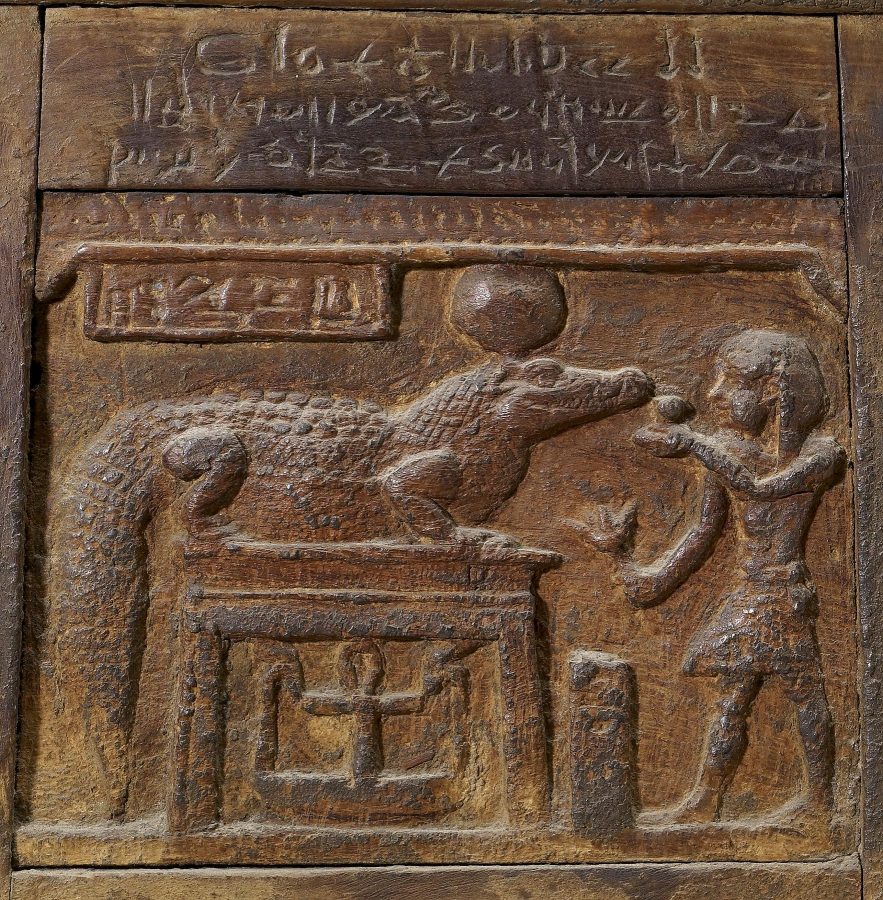
Sobek was regarded as the God of the Nile because he controls the waters and was responsible for making the soil fertile. Many scholars fittingly associate Sobek with the root word s-bAk which means”to impregnate”.
My interpretation of water in esoteric symbolism reveals how energy is guided by consciousness. Nature must have a conscious mind otherwise it cannot know how to grow.
Energy is the source of all creation. Soil represents Earth, which, in turn, is symbolic for the body and your experience of this physical reality.
The symbolic meaning of alligators in Egyptian myth explains how Sobek emerged from the primaeval waters of Nun to create the world. The Nile was formed from the crocodile’s sweat. In another myth, Sobek hatches from an egg but the meaning is essentially the same.
All life comes from either an egg, the waters of the womb or a seed. Each of these life-giving devices is found in mythologies in relation to stories of transformation – including the egg-shaped rock when Jesus is resurrected!
Interestingly, in the Middle Kingdom, Sobek was also associated with the sun god, Horus and iconography emerged of the god pictured with a falcon’s head (Horus) on the body of a crocodile.
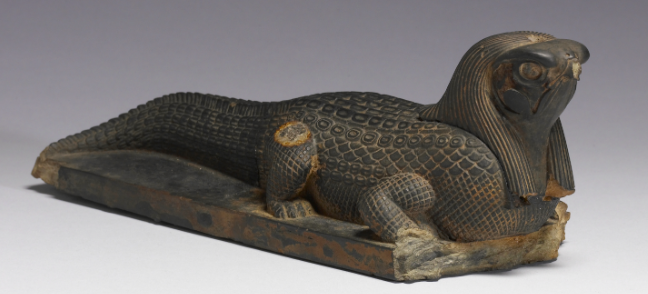
In this regard, the symbolic meaning of alligators has an association with healing and the third eye which Horus is famously connected to.
It is with this ‘inner-eye’ that you are able to see your negative qualities and suppressed emotions.
One way to achieve this is by observing the unconscious mind and bringing the impure aspect of the Self to the awareness of the conscious mind.
Impurity is caused by false beliefs, impressions and images born from the programmed thoughts we continuously develop as we experience life.
The information we absorb through the five senses is stored in the subconscious. Sometimes this is a good thing. Learned experiences enable us to function appropriately.
However, information stored in the unconscious that the conscious has not realised is the cause of all your problems.
“Man becomes whole, integrated, calm, fertile, and happy when (and only when) the process of individuation is complete, when the conscious and the unconscious have learned to live at peace and to complement one another.” ~ Carl Jung, Man and His Symbols
Set, the brother of Osiris and uncle of Horus, was the father of Sobek. The crocodile god’s mother was the equally destructive Neith. In other words, the crocodile man was born from the union between the god of war, chaos and storms, and the goddess of war and hunting.
Here we see the confusion in the conflicting interpretation of the crocodile. But like all symbols, there is a positive and negative meanings. The simple reason for this is that nature is governed by various laws, one of which is the law of duality.
Sobek was also depicted as being unpredictable and was thus associated with the forces of chaos. Like crocodiles in the real world, he was overtly sexual which reflects the inability of mankind to control emotional urges.
His ambiguous nature is depicted in the myth of Osiris’ brutal death. When the god’s body parts were thrown into the river, Sobek ate the limbs only to be reprimanded for dishonouring a god.
To redeem himself, Sobek helps to reassemble Osiris. In another myth, Horus transforms into a crocodile. This reflects man’s healing powers and ability to “ward off evil” – code for keeping the dark side of your nature under control.
In another myth, Sobek’s protective qualities are revealed when he saves Horus’ children from drowning in the Nile.
He is also associated with the primordial sun god God Ra who is also associated with the third eye and self-realisation. In Egyptian iconography, Sobek is sometimes pictured with an ankh to reflect his ability to undo evil (disease) and cure illness.
In Hindu traditions, the crocodile is an aquatic mythical creature depicted as a half-animal half-fish. It is the vahana (vehicle) of Ganga, the goddess of the river Ganges, and Varuna, god of the sea.
The English translation of the Sanskrit word, ‘Makara’ means sea dragon or water monster. It is generally depicted in Hindu iconography as a Gharial (crocodilian) and a terrestrial animal, either elephant, deer or peacock. Each of these animals is related to transformation.
In his book, ‘The Handbook of Tibetan Buddhist Symbols’ Robert Beer describes the Makara as:
“An ancient mythological symbol, the hybrid creature is formed from a number of animals such that collectively possess the nature of a crocodile. It has the lower jaw of a crocodile, the snout or trunk of an elephant, the tusks and ears of a wild boar, the darting eyes of a monkey, the scales and the flexible body of a fish, and the swirling tailing feathers of a peacock.”
The symbolic meaning of alligators in Buddhism mirrors Hindu symbolism.
Occidental symbolism also links water with emotions. In Hinduism, the sacral chakra is represented by the crocodile. The sacral is the energy centre in the pit of the stomach from which all emotions are said to originate.
The ancient yogis of India said the sacral chakra produces developmental energy and is the power centre of creation (represented by fertility gods in mythology).
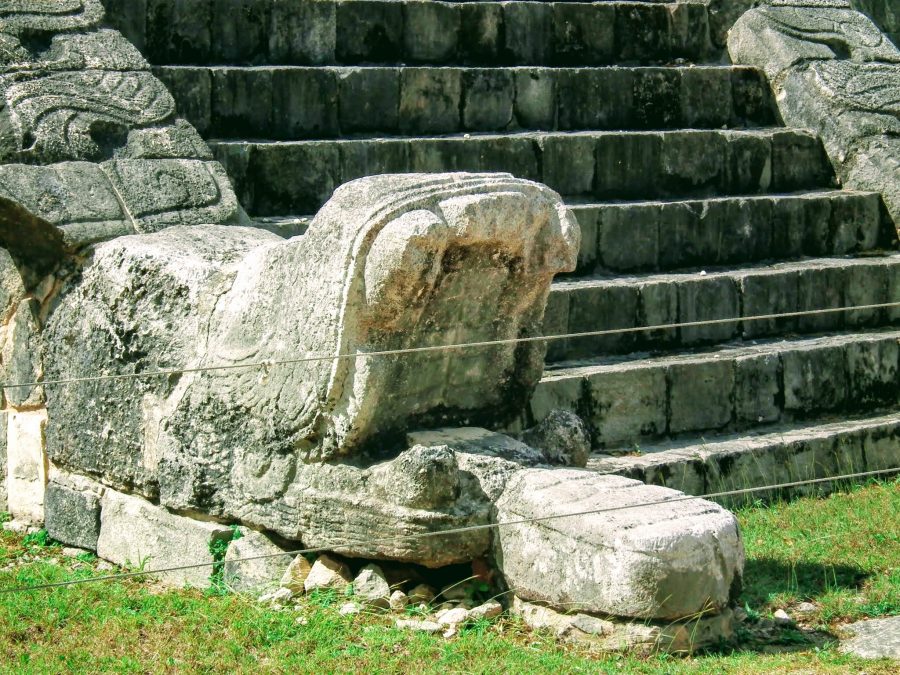
Again we see how the power and strength associated with crocodiles and alligators are used to symbolically teach mankind that we must also foster these qualities to achieve great things.
On the flip side, the symbolic meaning of alligators forewarns us of hidden dangers harboured in the subconscious. Jung understood the ‘Shadow’ can be dangerous.
“It is a frightening thought that man also has a shadow side to him, consisting not just of little weaknesses- and foibles, but of a positively demonic dynamism. The individual seldom knows anything of this; to him, as an individual, it is incredible that he should ever in any circumstances go beyond himself. But let these harmless creatures form a mass, and there emerges a raging monster; and each individual is only one tiny cell in the monster’s body, so that for better or worse he must accompany it on its bloody rampages and even assist it to the utmost.” ~ Carl Jung, On the Psychology and the Unconscious
Interestingly, the astrological sign associated with the Makara is Saturn. In Roman mythology, Saturn is a primordial god, or primordial energy, which needs attention in order to nurture to maturity.
Saturn, Cronos to the Greeks, also represents the best and worst aspects of human nature and is sometimes depicted with wings and described as the “winged serpent.”
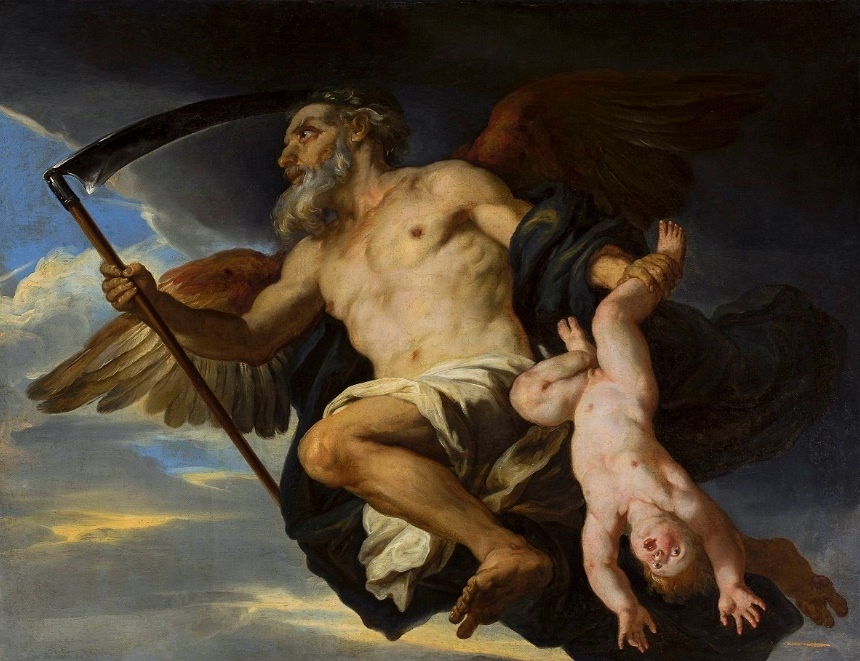
In parts of southern India, we find the Makara representing the fifth stage of development – symbolised with the head of an elephant, an animal symbolically associated with patience, power and prosperity.
Here you can see how the similarities in the symbolism of ancient India and Egypt are practically identical. Whilst it is easy to see how that would happen given it is known the two cultures were influenced by the same philosophies found right the way through Middle-Eastern territories, the same meanings also appear in mythologies on the opposite side of the planet.
From Egypt and India, we visit Mexico, the land of the ancient Maya in which we find the crocodile has identical meanings as other cultures – even though mainstream history protests the Americas were only discovered by the rest of the world in the late 15th Century.
The stark similarities in the meaning of Mesoamerican mythology and the symbols they use suggest otherwise. This can mean one of three things:
The first two suggestions fly in the face of modern science, or at least, it would seem, the greater percentage of the scientific fraternity.
If the history we are told is correct, the third option is the only realistic conclusion. Whilst it is undoubtedly true that esoteric symbolism was formulated by observing nature, how likely is it that cultures from different parts of the world all interpret nature in precisely the same way through symbolism?
Let’s take a look at the symbolic meaning given associated with crocodiles in Mayan traditions and later, the Aztecs. You will see that Mesoamerican ideology shares a very close relationship with both Egypt and India.
As a matter of fact, reptiles were revered in all three cultures and primarily associated with fertility, emotions and nobility.
The importance of crocodiles to Mayan cultures is evident in the historical records. Archaeological digs at El Tigre in the jungle of Campeche in Mexico recovered masks that were probably used for ceremonial purposes.
Crocodile heads (and serpents) were also integrated into the architecture of pyramid temples.
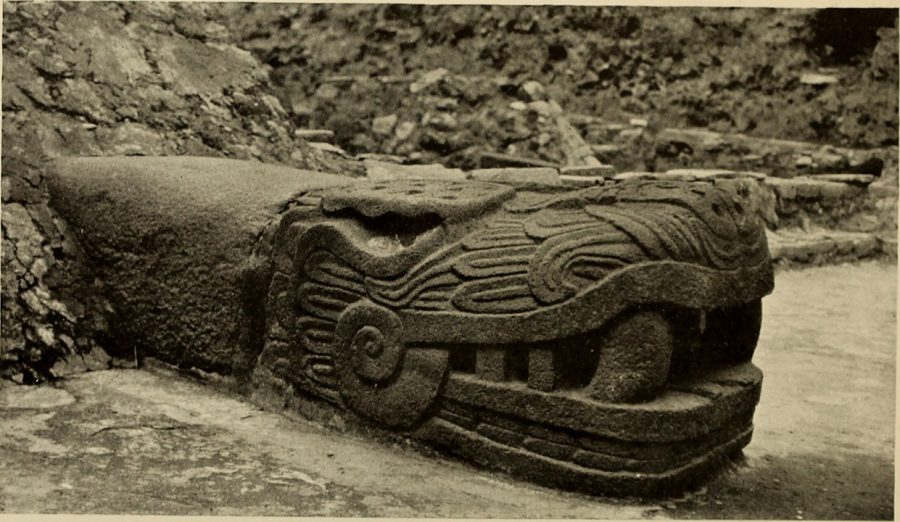
Known as the ‘Plumed Serpent,’ Kukulkan (better known through his Aztec name, Quetzacoatl) represented the most important aspect of Mayan civilisation and is said to have established the rules of law, agriculture, literacy, the arts, medicine, architecture, construction, hunting and fishing.
In Aztec mythology, the crocodile emerges as Cipactil (sea monster) and Tlaltecuhtli (earth monster). They are typically depicted squatting and have vicious claws, a gaping mouth and crocodile skin.
Quetzacoatl and his sidekick Tlatlecuhtil decide the cosmos cannot survive whilst such a ferocious creature existed and vows to destroy her. During the battle, the sea monster loses her jaw and is unable to sink below the water.
The story is a symbolic representation of bringing suppressed emotions in the unconscious to the surface – the conscious mind. This is the process of self-observation and self-realisation.
Like all other “primitive” cultures, the Mayans recognised the conscious mind is superimposed by information from the unconscious. They showed this by their concept of the three realms; Upper World, Lower World and the Natural World.
The natural world is, of course, Earth and includes our physical reality. The Mayan belief system suggests our natural bodies interact with the sacred “supernatural” – the cosmic intelligence which I believe are atomic particles.
Ancient cultures were much more connected to nature, had greater depths of intuition and recognised that mankind and the universe are interconnected. This is the level of understanding that we need to recover if we’re going to save the planet.
It was the human world in which the Maya placed crocodilians, a region that floated on the primordial sea. Sometimes the Earth was depicted as the scales on the back of a crocodile.
The primordial sea represents the cosmic intelligence – Supreme Consciousness, the “God” that is everywhere in nature. Earth is symbolic of our conscious reality.
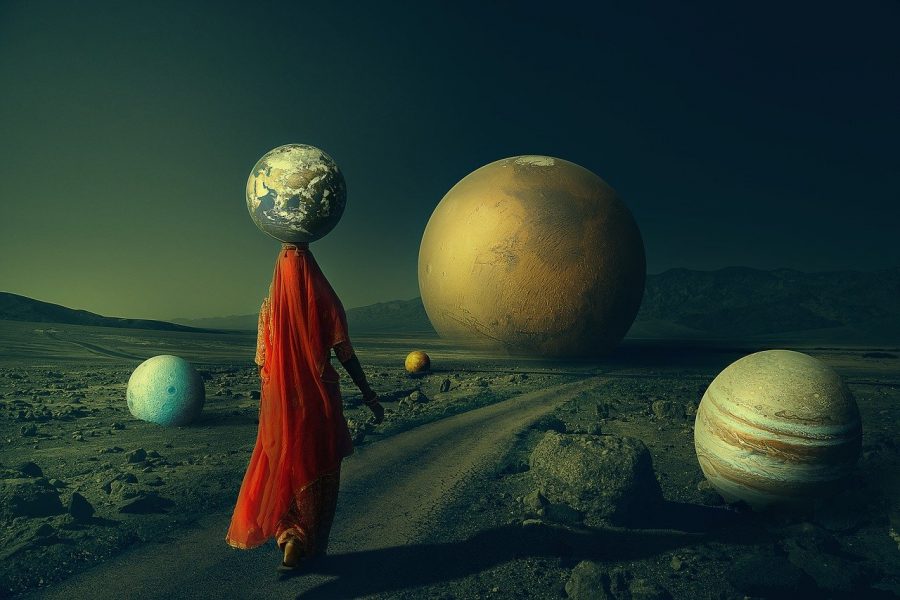
Mayan scholars have noticed the crocodile is associated with the Upper World (heaven) and the Underworld (Hell). Heaven and Hell represent the two aspects of human nature, our capacity for intelligence, and our capacity for ignorance.
“Here, two important elements meet, earth and water. Thus, the crocodile clearly is a fertility character. It is an animal that lives in the water and on the land; he impregnates one with the other and creates life” ~ Teri Arias Ortiz
Ancient cultures associated crocodilians with all three worlds because they emerge from water (the unconscious mind), on to land (the conscious mind). The three realms are lower conscious (animal nature), conscious (ego nature), higher conscious (natural Self).
There are three parts of the brain; the reptilian mind (animal nature/basic instincts), the paleomammalian mind (ego nature/emotional drive), and neo-mammalian mind (enlightenment/True Self).
Mayan mythology associates the gods of the Underworld with rain and fertility. They typically inhabited caves (the womb), places of transition between day and night (enlightenment and ignorance), and life and death (the process of transformation).
The symbolic meaning of alligators in Mesoamerica is also associated with the creator God, Itzam Na, who appears in Mayan iconography as the skeletal representation of crocodiles.
Itzam Na is also associated with life and death, day and night, reflecting the dual aspects of the conscious and unconscious mind. The name literally means caiman (a crocodilian) or lizard.
It is not a coincidence that the primitive, most underdeveloped part of the human brain is still referred to as the reptilian brain.
As I briefly mentioned earlier, esoteric symbolism relates to aspects of nature that are reflected in man. Ancient sages developed the meaning of symbolism by observing animals, plant and trees.
Despite what historians want you to believe, ancient cultures were not primitive peoples!
Incidentally, zoologists didn’t discover crocodiles have a complex system of communication until the 1960s.
Essentially crocodilians use their senses to communicate. Snakes do the same, and as you may remember, share the same symbolism with crocodiles.
In myth, the symbolic meaning of alligators, crocodilians and reptilians are associated with the Underworld which represents lower conscious nature. The Upper World represents a higher conscious nature. Both interact with the Physical world which relates to the conscious mind.

Click here to download your FREE copy of the Introduction to Symbolism Guide
In essence, crocodiles transcend and interact with all three worlds just as your lower conscious and higher conscious interact with your conscious mind.
You may be asking yourself right now, what is the third world that crocodiles transcend? What is their higher conscious nature? Why did ancient sages relate crocodilians to higher conscious nature?
There are two reasons.
Crocodiles have a ferocious nature and a timid nature. There is the true story of a man that rescued a crocodile and became friends with it. The crocodile stays loyal to him and the trust is so strong, they can swim together.
The two aspects of a crocodile’s nature, reflect the same aspects of human nature and consciousness. The law of duality is what makes you creative and destructive.
The second reason why crocodiles are linked with higher conscious nature is because you learn from your mistakes. It is the reptilian brain that generates cravings – the need for emotional survival.
If you remember the Egyptian myth of Sobek eating the flesh of Osiris. This shows the need for survival, physical and emotional. But when he is reprimanded by the gods, Sobek helps to recover Osiris’ body parts and repair him.
Here we see that when we recognise our mistakes, weaknesses, and other things about our nature that do not serve us, we learn something about ourselves and act accordingly to put it right.
It is by acting on newly found knowledge that you acquire wisdom – higher conscious nature, enlightenment of the True Self.
Thirdly, the appearance of reptiles in world mythologies indicates the newly acquired consciousness is potentially in danger of being destroyed by instincts which surface from the unconscious. According to Jung, “serpents usually occur when the conscious mind is deviating from its instinctual basis”. The same rule, therefore, has to be applied to crocodilians.
If you’re the type of person that is depressed right now, changing your habits is the best way to cure yourself. By performing old habits in a new way, you transform energy in a different way also.
Other aspects of crocodilian nature observed by zoologist is their promiscuity (fertility and virility) a hierarchical social system (nobility) and their preference to stay faithful to their partners.
Each of these qualities is required for personal growth. Listen to your higher conscious mind and you will create better outcomes in your life.
A crocodilian’s penchant for violence and ferocity is a clear link with the military. The war you fight is against your lower conscious nature, the battle to overcome bad habits. Gods and demons fight all the time in ancient myths.
Crocodilians are also very protective of their young. The ferociousness to protect their offspring from danger is why alligators were called “land monsters” in ancient myth.
The attribute of power is derived from the crocodile’s physical, mental and emotional strength. Crocodiles lay motionless in the water for hours waiting for their prey. They are very patient.
In mankind, patience requires a strong mental and emotional attitude.
A crocodilian’s destructive nature and creative nature positions these creatures as a symbol of regeneration; the birth, death and rebirth of energy. The reptilian link bears a relation to primal energy.
When you examine the symbolic meaning of crocodiles from an exoteric perspective (bites of information made known to the public), it offers little insight or help.
Once you understand the symbolic meaning of alligators, you are better placed to make an informed decision whenever such matters appear in your life.
So…back to my alligator dream.
When you interpret dreams or symbols, you should always look for hidden meaning. The best way to do that is to observe what is happening in your life at the time dreams and symbols surface.
I don’t remember exactly what was happening in my life around the time I was dreaming of crocodiles. However, I do remember the type of boy I was, so am able to understand why crocodiles appeared in my subconscious.
Essentially, I was not getting the emotional support I needed as a child so my reptilian brain grew stronger than my neomammilian brain. For many years, well into my adult life, I was emotionally insecure, lacked confidence in myself and was consistently self-destructive.
I’m not going to pretend that I have fully recovered from the affliction I developed as a young boy, but I am pleased to say I am making good progress and have successfully identified a series of repressed emotions and subconscious programs that were destructive.
Your capacity for personal growth (fertility) can only be achieved through applying the right thoughts, emotions and actions (creative and destructive energies).
Sometimes actions require courage and patience (strength and power). Crocodiles have no fear and will lay still in the water for hours waiting for prey.
This clever hunting ploy was originally thought to be laziness. It’s actually the deceptive nature of crocodilians – just as your lower conscious nature can also deceive you.
When you feel the deceptive qualities of the crocodile, you create disharmony with yourself.
When you deceive or are deceived, it does not sit with your True Nature. Your prana – vital energy – typically manifests as nervous energy or some other fear-based emotion.
When I was growing up, I was shy and quiet. I lacked self-esteem and my mind would often go blank when I was under pressure. My parents and teachers always seemed disappointed in my achievements because they expected more.
My first teacher compared me with “an absent-minded professor” and I was a highly creative child. Yet I was only an average student. I was a round peg in the square box created by the education system.
Because I never received any emotional support I withdraw deeper into myself. Fear manifested as social anxiety in my teens, twenties, and early thirties.
Because I had low self-esteem and lacked confidence, I didn’t think anybody liked me. That wasn’t the case, but it was the story I told myself. To compensate, I always tried to please others and did what they wanted to do.
As a result, I did not mature well as an adolescent. I did even know what I liked to do or listen to. I didn’t into music until I was 16 because I didn’t hear anything I liked on the radio and there was nobody close to me that influenced my music tastes. Today, I am passionate about music and have an eclectic taste.
The esoteric symbolism in ancient myth teaches us about our True Self. To peel back the layers of social conditioning and reveal your true nature, you need to recognise the aspects of ego that are subconscious programs.
Personal growth requires you to develop the ability to discriminate between the lower conscious mind, the higher conscious mind and the Supreme Conscious.
Your higher and lower conscious is your personal mind. Sigmund Freud called these aspects of mind, ego and superego. Supreme Consciousness originates from a secret Universal source and tells us everything we need to know. Learn to trust it and you have a built-in guide that will steer you through life and attract everything you need.

Click here to download your FREE copy of the Introduction to Symbolism Guide
Physical health materially depends upon correct breathing. Oriental teachers say the physical benefits derived from correct breathing habits aid mental power, happiness, self-control, clear-sightedness, morals and even spiritual growth.
Given we have to breathe, it worth understanding the “yogi science of breath.”
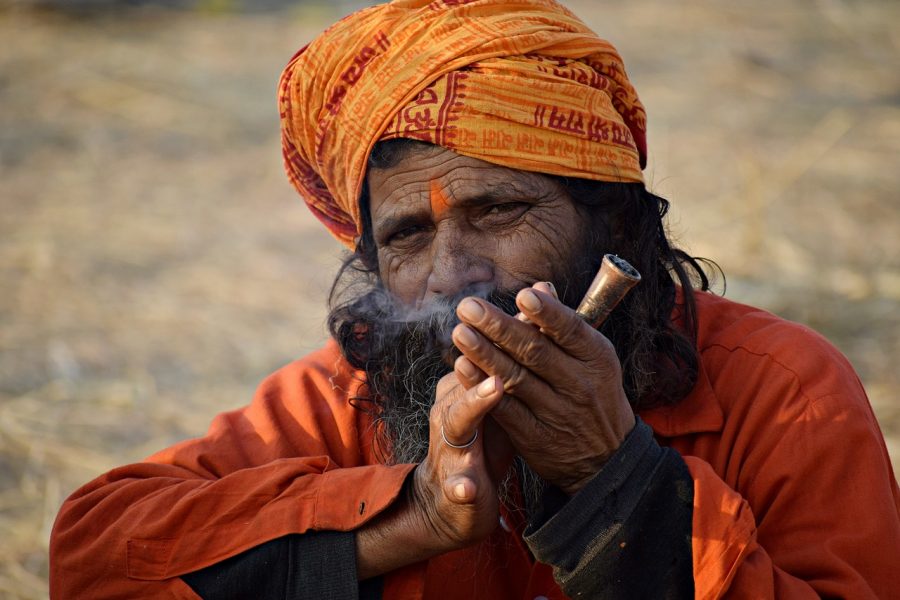
Oxygenated blood is purified and carried back to the heart, rich, red and bright, laden with life-giving properties. Upon reaching the left auricle of the heart, it is forced into the left ventricle, from whence it is again forced out through the arteries on its mission to life to all parts of the system.
If one does not breathe in a sufficient quantity of air, the work of the blood cannot go on properly, and the result is that the body is insufficiently nourished and disease, or state of imperfect health, ensues.
If the blood is not fully purified by the regenerative process of the lungs, it returns to the arteries in an abnormal state, insufficiently purified and imperfectly cleansed of the impurities which it took up on its return journey. These impurities, if returned to the system, will certainly manifest in some form of disease.
Likewise, if the air you breathe is filled with pollutants the body has to work harder to neutralise the threat. It is advisable to eliminate buying household products that contain toxins. If you meditate, consider creating a space that is free of any products with toxic chemicals in it.
Imperfect breathing only uses a portion of the lungs cells and a great portion of the lung capacity is lost, the system suffering in proportion to the amount of under-oxygenation.
The lower animals, in their native state, breathe naturally, and primitive man undoubtedly did the same. The abnormal manner of living adopted by civilised man has robbed us of our natural habit of deep breathing and the race is greatly suffering as a result. Man’s only salvation is to return to nature.
Occultists in all ages and lands have always taught, usually in secret, that there was to be found in the air a substance or principle from which all activity, vitality and life was derived.

Yogis know that by certain forms of breathing they establish certain relations with the supply of prana and may draw on the same for what they require.
The Cerebro-Spinal System consists of all that part of the Nervous System contained within the cranial cavity and the spinal canal, the brain, the spinal chord, together with the nerves which branch off from the same. This system presides over the functions of animal life known as volition, sensation.
The Cerebro-Spinal System attends to all the seeing, hearing, tasting, smelling, feeling etc. It sets things in motion; it is used by the Ego to think-to manifest consciousness. It is the instrument with which the Ego communicates with the outside world. The system may be likened to a telephone system, with the brain as the central office, and the spinal column and nerves as cable and wires respectively.
Yogi science teaches that the Solar Plexus is really a most important part of the Nervous System, and that it is a form of the brain, playing one of the principal parts in the human economy.
Yogi theory regarding the Solar Plexus, further than to say that they know it as the great central store-house of Prana.
The name “Solar” is well bestowed on this second “brain” as it radiates strength and energy to all parts of the body, even the upper brains depending largely upon it as a storehouse of Prana.

The breathing mechanism of Man is constructed to breathe either through the mouth or nasal tubes, but it is a matter of vital importance which method to follow. One way brings health and strength, the other disease and weakness.
The respiratory organs have a protective apparatus, a filter, or dust-catcher, in the nostrils. The two narrow, tortuous channels, contain numerous bristly hairs which serve the purpose of a filter or sieve to strain the air of its impurities, etc. which are expelled when the breath is exhaled. Not only do the nostrils serve this important purpose, they also perform an important function in warming the air inhaled.
When the breath is taken through the mouth, there is nothing from mouth to lungs to strain the air, or to catch the dust and other foreign matter in the air. From mouth to lungs the dirt or impure substance has a clear track, and the entire respiratory system is unprotected. Moreover, such incorrect breathing admits cold air to the organs, thereby injuring them.
The Yogis classify respiration into four general methods;
This form of yogic breathing is known as Clavicular Breathing, or Collarbone Breathing. When breathing this way, one elevates the ribs and raises the collarbone and shoulders, at the same time drawing in the abdomen and pushing its contents up against the diaphragm, which in turn is raised.
The upper part of the chest and lungs, which is smallest, is used, and consequently but a minimum amount of air enters the lungs.
High breathing is probably the worst form of breathing known to man and requires the greatest expenditure of energy with the smallest amount of benefit.
This method of respiration is known as Rib Breathing or Inter-Costal Breathing, and while less objectionable than High Breathing, is far inferior to either Low Breathing or to the Yogi Complete Breath. In Mid Breathing, the diaphragm is pushed upward, and the abdomen is drawn in. The ribs are raised somewhat, and the chest is partially expanded.
Known as Abdominal breathing, Deep Breathing or Diaphragm Breathing, is widely believed to be the best method of breathing in the West, and although it delivers more benefits that the two aforementioned types of breathing cannot match Complete Yogic breathing.
When diaphragm breathing, the hill formation is lowered and the diaphragm presses upon the abdominal organs and forces out the abdomen.
In Low breathing, the lungs are given freer play than in the methods already mentioned, and consequently, more air is inhaled thus using more capacity of the lungs and spreading healthy air into the blood.
Complete Yogic Breathing includes all the good points of all the aforementioned types of breathing, with the objectionable features of each eliminated. It brings into play the entire respiratory apparatus, every part of the lungs, every air-cell, every respiratory muscle.
One of the most important features of this method of breathing is the fact that the respiratory muscles are fully called into play, whereas in the other three, only a portion of these muscles is used.
In the rib-action, the lower ribs are controlled by the diaphragm which draws them slightly downward, while other muscles hold them in place and the intercostal muscles force them outward, which combined action increases the mid-chest cavity to its maximum. In addition to this muscular action, the upper ribs are also lifted and forced outward by the intercostal muscles, which increases the capacity of the upper chest to its fullest extent.
By practising yogic breathing techniques on a regular basis you will reduce stress levels and handle situations that life throws at you with calmness and clarity. Inhaling more oxygen into your bloodstream also helps clean toxins from the body and stimulate feelings of wellbeing and vitality.
The cross is one of the oldest known symbols in the world and predates Christianity by at least 5000 years. Probably more.
Thus the cross has taken on several forms over the centuries. It is found on the walls of pre-historic caves featured as two crossing marks of equal length. When encased in a circle it is known as the solar cross. It represents the element of fire and was used by several cultures as a symbol to represent their Sun God.
The equilateral cross gave birth to the familiar Christian cross we find today with a longer lower rim. The ancient Egyptians rounded the upper portion of their cross to make the Ankh, and the pagan Celtic Cross was given a disc to centre the point where the two rods meet.

The Latin Cross is the most recognised symbol used by the Christian Church today, but its origins pre-date Christianity by at least several thousand years.
We also know the swastika was adopted by several European cultures and appeared on Greek ceramics as early as the 8th Century BCE. The English word was taken from the Sanksrit word svastika, which means “good fortune” or “well-being.”
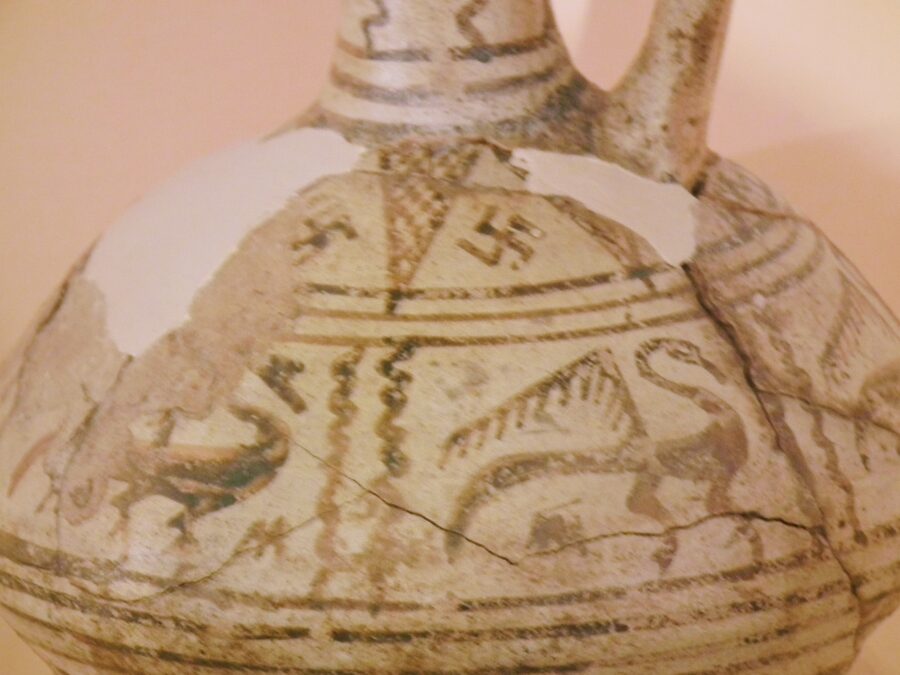
The Judaeo-Christian religion adopted the cross in the second century “to ward off demons”. The pagans had used it for the same purpose. In Norse mythology, the symbol was also a magical symbol that diverted evil and brought good luck.
“Warding off demons” and “evil” is, of course, symbolic language. Demons are our personal demons and evil is associated with things that live in the dark and do terrible things. Like demons, for example.
In esoteric symbolism, the unconscious is associated with “demons”, “evil” and the “dark” because it is in the unconscious where the aspects of our nature that we don’t see reside.
If we examine this on a deeper, esoteric level, the cross is a symbol of balance and harmony. In the human psyche, this can relate to either a balance of feminine and masculine energies, the self-ego axis or what Carl Jung called “superior” and “inferior” functions.
The superior function is an aspect of consciousness that we use most often and is thus the stronger energy; habitual behaviours and addictions, for example.
The inferior function is the least used aspect of consciousness but tries to spring forward to counterbalance the superior function and restore some equilibrium.
The inferior function may be an unexpressed aspect of our personality that has been repressed because it is frowned upon by society or we were led to believe our behaviour was bad. Or maybe “evil”.
“Many complexes are merely split from consciousness because the latter preferred to get rid of them by repression. But there are others that have never been in consciousness before and that therefore could never have been arbitrarily repressed. They grow out of the unconscious mind and invade consciousness with their weird and unassailable convictions and impulses.”
Carl Jung, Psychology and Religion
In Jungian psychology, the goal is to find a balance between the masculine and feminine traits of your personality and to develop a harmonious relationship between the self-ego axis.
This can often involve finding an equilibrium between instincts and intellect. Carl Jung stressed that it is necessary to explore one’s unconscious in order to form a harmonious relationship within the psyche. Alchemists called this process the “Alchemical Wedding”.
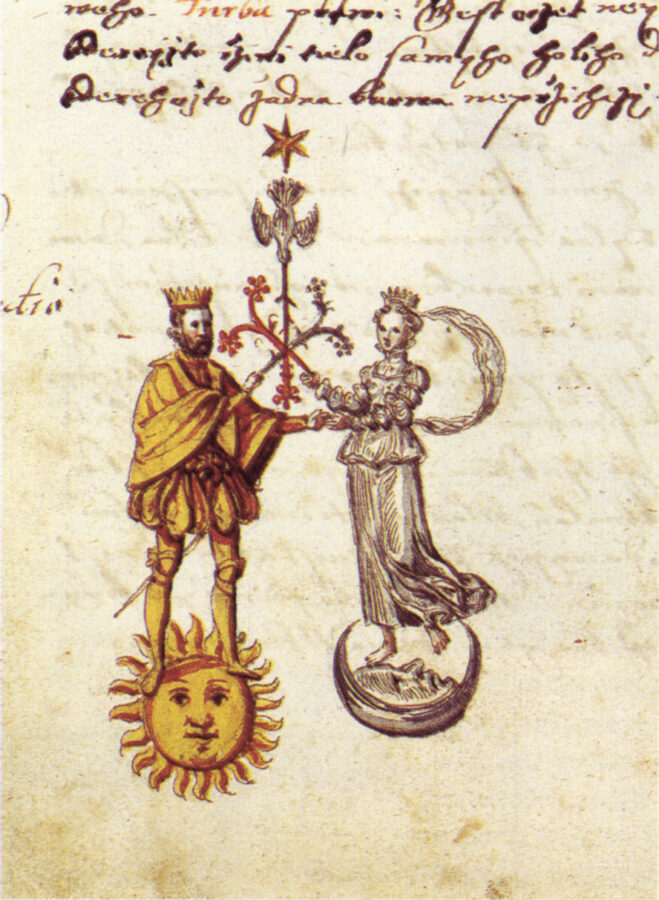
It was during the time of Emperor Constantine at the Council of Nicaea in 324AD that Christianity adopted the Latin Cross we know today. It replaced the vesica piscis or ‘Ichthus’ fish as their principal symbol of Jesus.
The cross went on to become the most widely recognised motif in the world today. It is sometimes found with a man nailed to it!
But the hidden meaning of the cross is not widely known. The two single shafts that make up the cross represent male and female – thus signifying the unity between man and woman.
Therefore, you could say the symbolic meaning of the Latin cross is a sex symbol.
But that would be misleading.
As mentioned above, the balance of masculine and feminine energies refers to the harmonious marriage between the conscious and unconscious minds.
This is why you will also find the cross represents fertility and health.
Firstly, consider that the intimate union of males and females creates new life. This is fertility.
Secondly, when you integrate unconscious content into the conscious mind, the unlived aspects of your personality that were formerly repressed are reborn. They become alive. This is also fertility.
Moreover, depth psychology shows that the release of repressed emotions is a catalyst for healing mental health.
“Repressed conscious becomes accessible to the condemnation of the mature ego. Since the unconsciousness of a desire is the condition of the symptom, making it conscious must produce a cure.” ~ Wilhelm Reich, The Function of the Orgasm
An early form of the Christian cross was the Tau cross – shaped like a T. It is equal to the letter X from the Phoenician alphabet, also another way of depicting the cross in iconography.
This is where the history of the cross gets really interesting.
Note how the serpent wrapped around the cross is similar to the staff of Asclepius and the caduceus of the Greeks. They all share the same meaning – healing.
Asclepius is said to be the Greek god of healing. The staff of Asclepius is a symbol that has been adopted by today’s medical field. Globally.
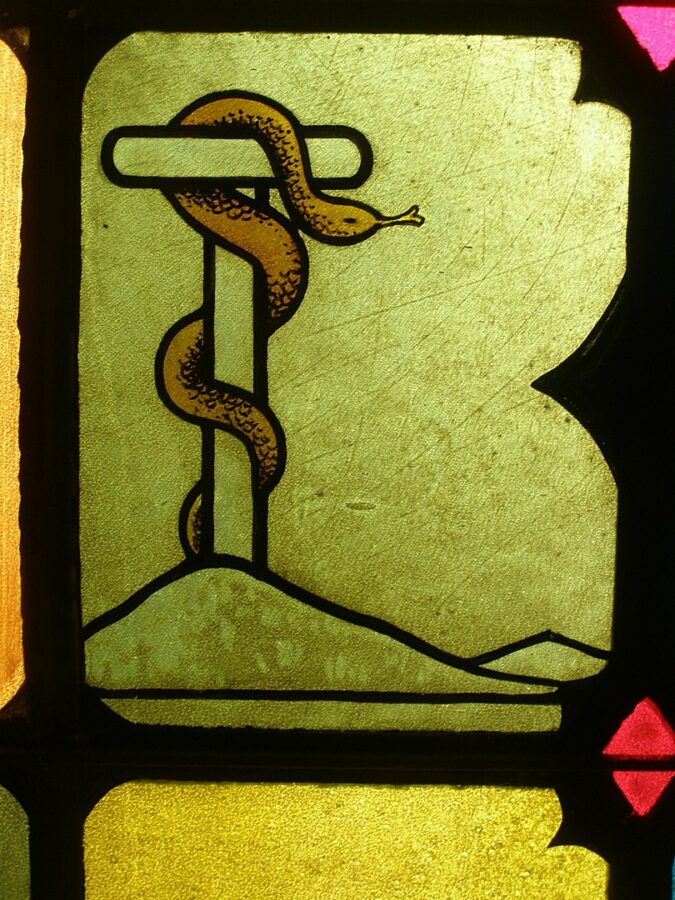
The Tau cross was borrowed by the early Christian Church and dedicated to St. Anthony who was part of the St Franciscan Order – and the patron saint of pregnant women. (Remember my reference to giving life earlier).
It also appears the members of that particular brethren were into psychedelics.
I say that because whenever I visit a Franciscan church I find artefacts which appear to be crack pipes and various instruments used in chemistry – which may have been used for brewing crack to ingest through said pipes.
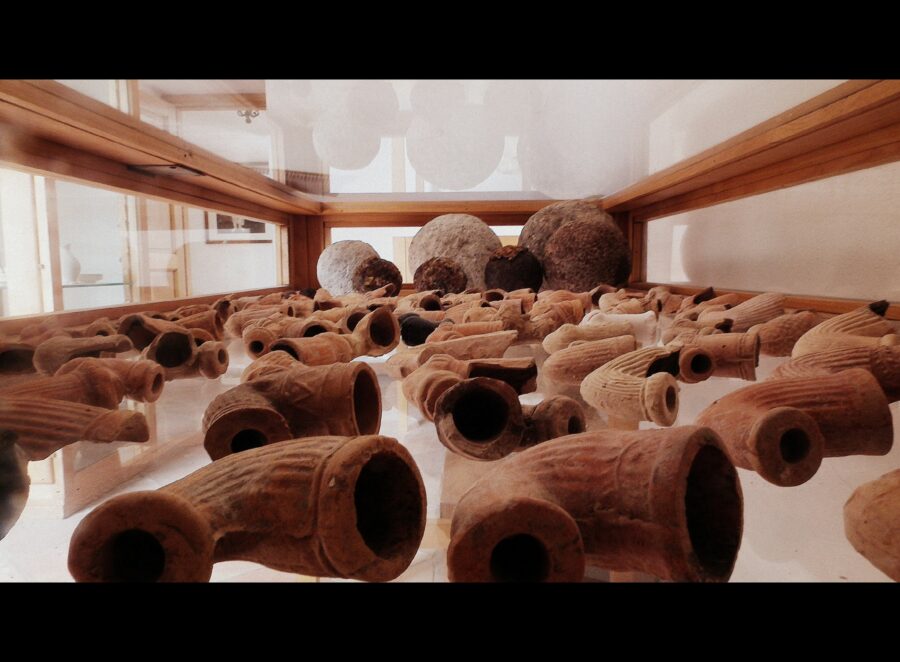
Psychedelics with active ingredients like psilocybin and dimethyltryptamine (DMT), as you may know, are Mother Nature’s medicines that can, and are, used for healing emotional traumas and psychological complexes.
Christians are familiar with the cross representing salvation. When Jesus is sacrificed and resurrected, he essentially overcomes death. Thus, we are told, the cross represents immortality.
But another meaning we can draw from the crucifixion of Jesus is the concept of death and rebirth. Here we see the law of physics known as the Law of Thermodynamics.
The Law of Thermodynamics says that energy does not die, it transforms. Yes, this means that energy is immortal, but it also means that it changes from one form to another.
Consciousness also transforms, and when our conscious awareness transforms so can our life. But we have to sacrifice old beliefs, attitudes or behaviours before we can transform our conscious awareness.
So isn’t it interesting that the Christian authorities tell us that the cross is a symbol of salvation used for warding off evil?
Salvation means the “preservation or deliverance from harm, ruin, or loss.”
Doesn’t this description sound as though it can be applied to health matters?
In Hindu traditions, yogis proclaim that balancing your chakras is important for maintaining mental, physical and emotional health.
Could there be any relation between the Hindu chakra system and the Christain cross?
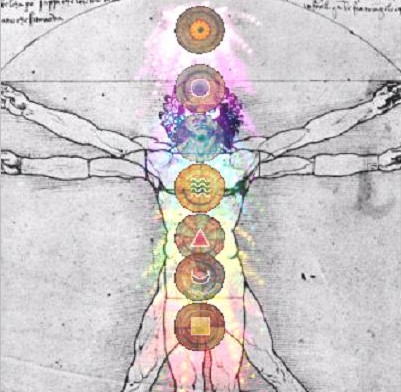
It is when Jesus dies and is resurrected that he becomes the supreme being and reconnects with the ‘Father’. In esoteric symbolism, the Father is the Mind.
The Mind expands beyond the body. It is not limited to the brain. Quantum physicists think we could be connected to a universal mind which is a storehouse of memories of humankind – which Jung called the collective unconscious
Eastern philosophy describes the Universal Mind as the Akasa and the process as integrating the collective unconscious into the personal unconscious as the ‘Absolute Truth.’
Hindus describe this scenario as Samadhi in which the “kundalini serpent” is said to wind up the spine and open the third eye.
This image describes the process of “spiritual awakening” or, for want of a better term a moment of enlightenment – self-awareness.
If you repeat this process often enough, you eventually recover all the repressed attributes of your personality whereby you no longer feel suffering or desire and are released from the karmic effects of death and rebirth.
“Man becomes whole, integrated, calm, fertile, and happy when (and only when) the process of individuation is complete, when the conscious and the unconscious have learned to live at peace and to complement one another.”
Carl Jung, Man and His Symbols
The similarities between the Christian tradition and the Hindu seem very closely related, don’t you think? The Latin Cross was inspired by the swastika, “warding off evil” brings “good fortune” and the crucifixion story shares the same concept of ascension which is achieved by balancing the chakras which awaken kundalini energy.
Kundalini energy feels like a serpent winding up the spine. This image is seen in the caduceus and written in the Bible.
“And as Moses lifted up the serpent in the wilderness, so must the Son of man be lifted up… (John 3:14).

Just saying.
You can read more about how Jesus represents the “Eye of Knowing” or “Third Eye Chakra” in this article titled: The Symbolic Meaning of Jesus Christ as the Third-Eye Chakra.

Click here to download your FREE copy of the Introduction to Symbolism Guide